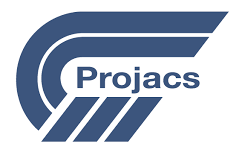
Risk Assessment and Mitigation Planning
Course ID: 2506020101347ESH
Course Dates : 02/06/25 Course Duration : 5 Studying Day/s Course Location: London, UK
Language: Bilingual
Course Category: Professional and CPD Training Programs
Course Subcategories: Health, Safety and Risk Management
Course Certified By: ESHub CPD & LondonUni - Executive Management Training
* Professional Training and CPD Programs
Leading to:
Executive Diploma Certificate
Leading to:
Executive Mini Masters Certificate
Leading to
Executive Masters Certificate
Certification Will Be Issued From :
From London, United Kingdom
Course Fees: £5,120.30
Vat Not Included in the price. VAT may vary depending on the country where the course or workshop is held.
Click to Pay
Date has passed please contact us Sales@e-s-hub.com
Course Information
Introduction
Risk assessment and mitigation planning are integral to the strategic decision-making process within organizations. Understanding and managing potential risks is critical to ensuring business continuity, safeguarding assets, and maintaining a competitive edge in today's dynamic and often unpredictable business environment. The ability to identify, assess, and mitigate risks not only ensures organizational resilience but also fosters an environment of proactive management and informed decision-making. The increasing complexity of global markets, coupled with technological advancements and evolving regulatory landscapes, underscores the importance of robust risk management practices. Without these, organizations are vulnerable to unforeseen challenges that could significantly impact their operations, reputation, and bottom line.
Risk assessment involves systematically identifying potential hazards that may affect an organization’s objectives. It requires an in-depth analysis of the various threats—be they financial, operational, legal, technological, or strategic—that can arise within the context of the organization’s operations. This is followed by evaluating the likelihood of their occurrence and the potential impact on the business. However, identifying risks is only one part of the equation. Equally important is the ability to create mitigation strategies that minimize or eliminate these risks. Effective mitigation planning ensures that an organization not only survives potential disruptions but also thrives by taking proactive measures to reduce vulnerability.
The challenges associated with risk assessment and mitigation planning are manifold. In an era where businesses face increasingly complex and interconnected threats, understanding the nuances of risk is more critical than ever. Organizations must navigate through layers of internal and external risks, with the added complexity of international regulations, cybersecurity threats, and economic volatility. Furthermore, risk management needs to be aligned with the organization’s objectives, culture, and risk appetite, which can be difficult to achieve without a systematic approach. Failing to address risks adequately can lead to financial losses, legal repercussions, and irreparable damage to an organization's reputation.
On the other hand, effective risk management offers significant benefits to organizations. A well-developed risk assessment and mitigation plan can enhance decision-making by providing clarity on potential threats and allowing organizations to allocate resources more effectively. It also boosts stakeholder confidence, as effective risk management demonstrates foresight and responsibility. By systematically identifying and addressing risks, organizations are not only able to avoid potential losses but also capitalize on opportunities that arise in a less volatile environment. Additionally, a proactive approach to risk management can lead to improved compliance with industry regulations and enhance organizational agility.
The course on Risk Assessment and Mitigation Planning is designed to equip professionals with the knowledge, skills, and tools needed to implement effective risk management strategies. Through a blend of theoretical understanding and practical application, participants will learn how to identify risks, assess their severity, develop appropriate mitigation strategies, and apply these strategies to real-world scenarios. By the end of the course, participants will be empowered to take a leading role in managing risks within their organizations, ensuring business continuity and driving growth.
Participants will engage in a mix of interactive activities, case studies, and group discussions, making this course highly practical and relevant to current industry practices. Emphasizing both the science and art of risk management, this course will offer tools for analyzing risks and techniques for building resilient systems. A detailed exploration of risk mitigation strategies will provide participants with the practical insights necessary to build a sustainable and risk-conscious organizational culture.
Objectives
By attending this course, participants will be able to:
Identify, analyze, and categorize different types of risks faced by organizations, including financial, operational, legal, and reputational risks.
Apply proven risk assessment methodologies to evaluate the likelihood and potential impact of various risks.
Develop effective risk mitigation strategies that align with organizational goals and risk appetite.
Design and implement risk management plans to minimize disruptions and enhance business continuity.
Understand regulatory compliance requirements and integrate them into the risk management process.
Communicate risk findings and mitigation plans clearly to stakeholders at all levels of the organization.
Who Should Attend?
This course is ideal for:
Risk Managers and Consultants seeking to enhance their ability to identify and mitigate organizational risks.
Business Continuity Managers tasked with ensuring that organizations are resilient in the face of potential disruptions.
Project Managers who need to understand risk management principles to deliver successful projects on time and within budget.
Operations Managers focused on minimizing operational risks and ensuring smooth day-to-day operations.
Compliance Officers who need to understand how risk management aligns with legal and regulatory requirements.
Senior Executives and C-level Professionals involved in strategic decision-making who wish to integrate risk management practices into the broader organizational strategy.
Industry Professionals from sectors such as finance, manufacturing, healthcare, and technology, where risk management is critical to operational success.
Training Method
• Pre-assessment
• Live group instruction
• Use of real-world examples, case studies and exercises
• Interactive participation and discussion
• Power point presentation, LCD and flip chart
• Group activities and tests
• Each participant receives a 7” Tablet containing a copy of the presentation, slides and handouts
• Post-assessment
Program Support
This program is supported by:
* Interactive discussions
* Role-play
* Case studies and highlight the techniques available to the participants.
Daily Agenda
Daily Schedule (Monday to Friday)
- 09:00 AM – 10:30 AM Technical Session 1
- 10:30 AM – 12:00 PM Technical Session 2
- 12:00 PM – 01:00 PM Technical Session 3
- 01:00 PM – 02:00 PM Lunch Break (If Applicable)
- Participants are expected to engage in guided self-study, reading, or personal reflection on the day’s content. This contributes toward the CPD accreditation and deepens conceptual understanding.
- 02:00 PM – 04:00 PM Self-Study & Reflection
Please Note:
- All training sessions are conducted from Monday to Friday, following the standard working week observed in the United Kingdom and European Union. Saturday and Sunday are official weekends and are not counted as part of the course duration.
- Coffee and refreshments are available on a floating basis throughout the morning. Participants may help themselves at their convenience to ensure an uninterrupted learning experience Provided if applicable and subject to course delivery arrangements.
- Lunch Provided if applicable and subject to course delivery arrangements.
Course Outlines
Introduction to Risk Assessment
Understanding Risk Management: Definition, key principles, and frameworks for risk management.
Types of Risks: Identifying financial, operational, technological, legal, and strategic risks.
The Risk Management Process: Steps for assessing, evaluating, and prioritizing risks.
Risk Appetite and Tolerance: How to define and align risk appetite with organizational objectives.
Day 2:
Risk Identification and Analysis
Tools for Risk Identification: Techniques such as SWOT analysis, risk registers, and risk mapping.
Risk Analysis Techniques: Qualitative and quantitative methods for assessing risk.
Scenario Analysis and Stress Testing: Evaluating potential risks through simulation.
Risk Impact Assessment: Determining the severity of identified risks.
Day 3:
Risk Mitigation Strategies
Developing Mitigation Plans: Strategies for reducing, transferring, or accepting risks.
Building Resilience: Creating systems to respond to and recover from adverse events.
Cost-Benefit Analysis in Mitigation: Assessing the effectiveness of risk mitigation efforts.
Integrating Risk Mitigation into Strategic Planning: Aligning mitigation efforts with business goals.
Day 4:
Regulatory Compliance and Risk Management
Understanding Regulatory Requirements: Key compliance standards in different industries.
Legal Implications of Risk Management: How to ensure compliance while managing risks.
Risk Reporting and Documentation: Best practices for documenting risk assessments and mitigation efforts.
Dealing with Risk in a Global Context: Navigating cross-border risk management and international regulations.
Day 5:
Practical Applications and Case Studies
Risk Management Simulation: Applying risk assessment tools and mitigation strategies to real-world scenarios.
Case Studies: Analyzing successful risk management practices and learning from failures.
Risk Communication: How to present risk assessments and mitigation plans to stakeholders.
Final Q&A and Review: Recap of key takeaways and strategies for ongoing risk management improvement.



















































